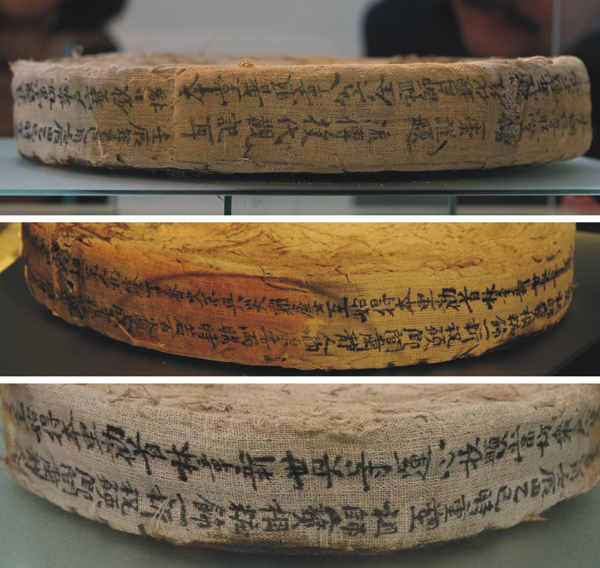 |
|
Inscriptions in classical Chinese on the linen cushion where the statue was seated. Photo provided to chinadaily.com.cn |
Benevolent master Zhanggong
The Buddha Zhanggong, being worshiped by villagers in Yangchun village, was a monk named Zhang Qisan. He was known for his benevolence.
Historical records show that Zhanggong was a skillful doctor who healed many patients. It is said local people wouldn't have escaped a plague were it not for his efforts, another reason why he was worshipped as their ancestor, or Zushi in Chinese.
Worshipping Zhanggong has been a tradition maintained for centuries, and renovation of the Buddha has been passed down through generations, the most recent one took place in 1944.
Inscriptions in classical Chinese on the linen cushion where the statue was seated indicated when and why the statue was renovated. The village head Lin Zhangxin and his colleagues including Lin Shixing in Yangchun called on residents to donate money to renovate it in the hope that with a renovated Zhanggong, a declining population could be reversed, people would be happy and a rich harvest in prospect.
The inscription also reads that the renovation was done on a particularly auspicious day by performing divination – at Hours of Yisi, Day of Renchen, Month of Yisi, Year of Renchen.
According to the study of Li Zhen in Hungary, the private overseas coordinator of Yangchun village, the exact time indicated here undoubtedly should be 9-11 o’clock, May 18, 1292. As the written records shown on the cushion also tell that the date of the renovation in traditional Chinese calendar is the first day of the fifth month of the year of Renchen, the 29th year of Zhiyuan Period. Zhiyuan is the reign title of Yuan Dynasty’s first emperor Kublai Khan (1215-1294), grandson of Genghis Khan.
Li Zhen also believes that another renovation of the Buddha statue was conducted in Ming Dynasty. A local historical writing titled The Records of Puzhao Temple marks that it happened in the year of Bingchen during the era of emperor Wanli, that was 1616.
Bruijn says, the lucky symbols, the dragons on the clothes of the Buddha were designed with more care and attention than other decorations, in "a style of the Ming Dynasty", which also confirms that the statue was redressed and gilded again during that time.
|
|
|
|
|
|
|
|
